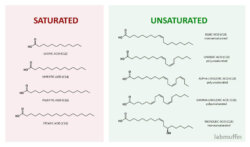Are unsaturated oils bad for your skin?
An article by Beautyeditor (now rebranded as The Skincare Edit) recently came to my attention, thanks to some readers who pointed me in its direction. In it, she blames polyunsaturated oils for aging, tells you to avoid them in your skincare AND diet, and tells you to use saturated fatty acids (in particular squalane) instead. As a big fan of …
